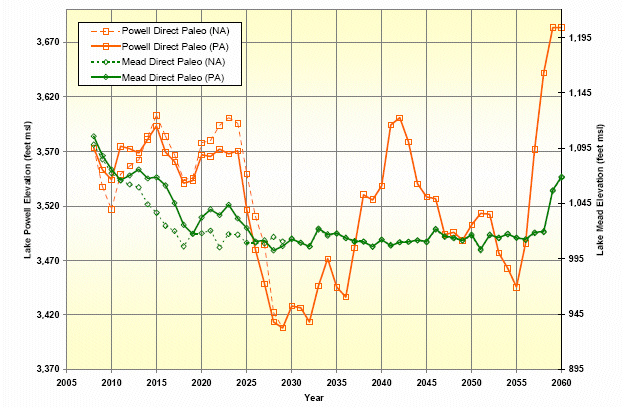Workshop Report
Tree-ring reconstructions of streamflow and their use in water management in the Upper Colorado River Basin
Upper Colorado Regional Office, US Bureau of Reclamation
Salt Lake City, UT - March 26, 2008
This all-day workshop was hosted by Reclamation and was advertised to other agencies in the Salt Lake area. Of the 16 participants, ten were from Reclamation (both the Regional and Provo area offices), with the others from the National Weather Service's Colorado Basin River Forecast Center, the Utah Division of Water Resources, and the Natural Resources Conservation Service (see participant list). Heather Patno, Hydraulic Engineer with the Regional Office, coordinated the workshop outreach and logistics.
As with previous workshops, the main objective was to provide participants with a general understanding of how tree-ring reconstructions of streamflow are generated, to facilitate useful interpretion and application of these data. I presented a version of our main instructional presentation that included more detail on recent and ongoing Reclamation applications of tree-ring-based hydrologies, in particular those for the recently released Colorado River "Shortage" EIS. My tree-ring colleague Matt Bekker of BYU also presented his and his students' ongoing work developing tree-ring hydrologies for the Wasatch, which underscored within a local context many of the issues I discussed in the main presentation. Throughout the workshop, participants asked thoughtful and probing questions about the reconstruction methods and results.
Matt's presentation and later workshop discussion pointed to the need for more paleohydrologic data for Utah watersheds. Reconstructions have been generated for several gages on the mainstem Colorado and Green Rivers relevant to the operation of the large Reclamation reservoirs in Utah (Flaming Gorge and Powell), but little has been done on Utah's tributaries to those rivers or watersheds within the Great Basin. While existing tree-ring chronologies could be better exploited to meet at least some of this need, new field collections such as Matt's will be necessary in many basins to establish the basis for robust paleohydrologies.
On March 27, I presented a condensed version of the previous day's presentation to four additional Reclamation staff who could not attend the full workshop.
Thanks again to Heather Patno and Reclamation for making this workshop possible, and to all of the participants for their interest and engagement.
Jeff Lukas, University of Colorado & WWA




